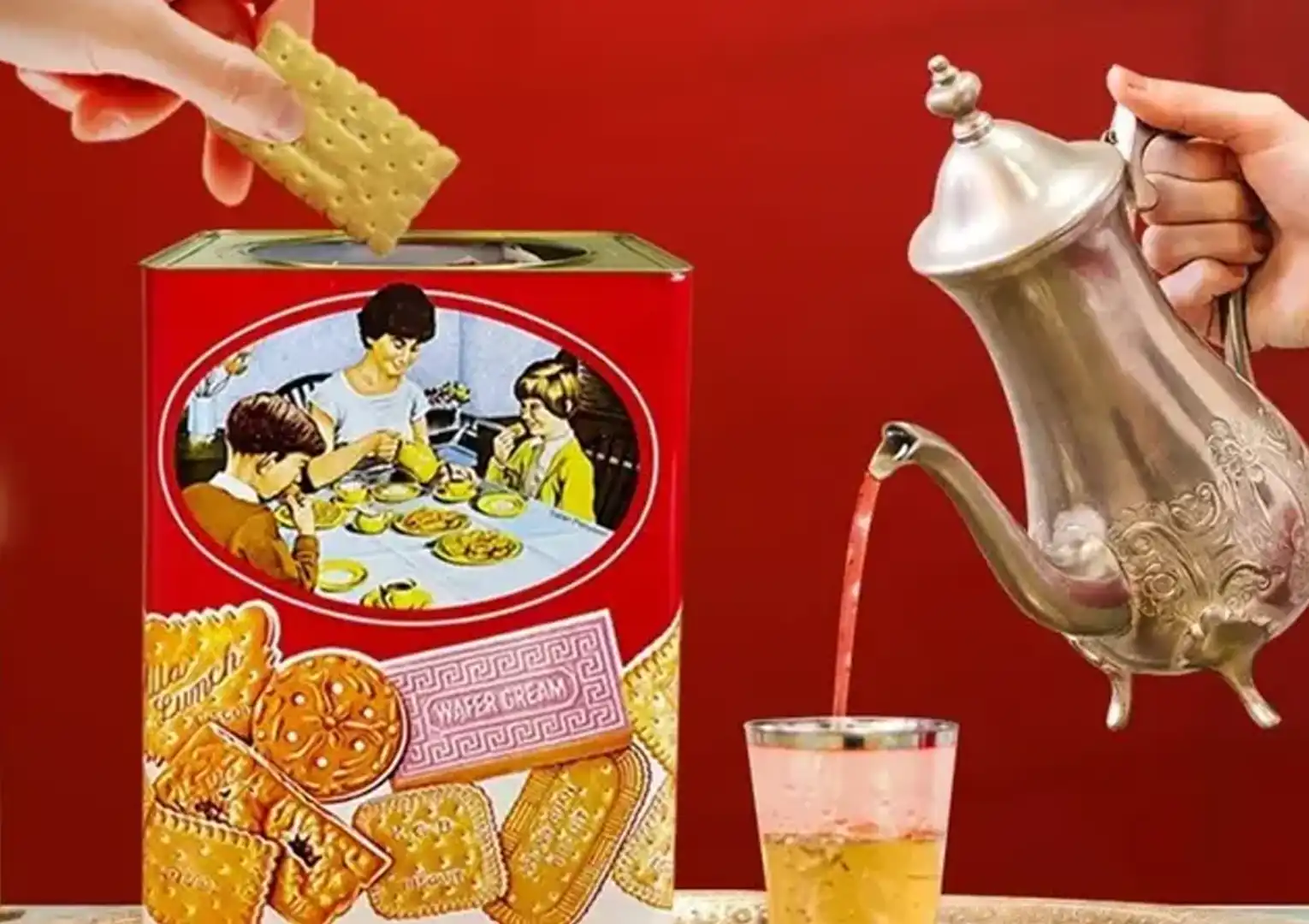Learning from Khong Guan’s Business Strategy: The Iconic Biscuits of Eid
March 21, 2025
Share This Article

Among the many biscuit brands available on the market today, none seem to surpass the popularity of Khong Guan Biscuits with its iconic red tin. Especially during Eid celebrations, a household feels incomplete without a tin of Khong Guan biscuits.
Even though the tin’s contents aren’t always biscuits—often repurposed to store crackers or peyek—everyone can still instantly recognize it as a Khong Guan biscuit tin. That’s how iconic the brand is in Indonesia.
So, how did Khong Guan become so famous in Indonesia, and what business strategies have contributed to its success? Keep reading this article to find out!
The Business History of Khong Guan
It’s true that this biscuit brand is produced domestically in Indonesia. However, did you know that Khong Guan was originally made in Malaysia and first gained popularity in Singapore and the United States?
Khong Guan was founded by two immigrant brothers from Fujian, China—Chew Choo Keng and Chew Choo Han—who initially worked at a biscuit factory in Singapore. During the 1940s, when Japan invaded Singapore, they fled to Perak, Malaysia, where they began making and selling biscuits to survive.
Once they were able to return to Singapore, they continued their biscuit business on a larger scale. Surprisingly, their biscuits became highly popular in the country, leading to the establishment of Khong Guan Biscuit (KGB) Factory (Singapore) Limited in 1947.
As their business flourished, KGB ventured into the U.S. market by founding Khong Guan Corporation (KGC) in 1982. With the same business focus, KGC grew significantly and became a leading biscuit brand in the region.
Following this success, KGB expanded its business to multiple countries.
Becoming the Biscuit King of Indonesia
Khong Guan’s presence in Indonesia wasn’t due to KGB opening a branch in the country. Instead, it was brought in by Ong Kong Ie, Kwee Boen Thwie, and Go Swie Kie, the owners of a company called NV Giok San Kongsie.
Initially, this company only imported Khong Guan biscuits from Singapore. However, as their business grew, they eventually decided to establish PT Khong Guan Biscuit Factory Indonesia Ltd.
It wasn’t until 1971 that the company started producing Khong Guan biscuits locally. This decision proved to be highly successful, as the brand rapidly expanded and eventually dominated 70% of Indonesia’s biscuit market.
What Makes Khong Guan So Iconic
To this day, the biscuits with their iconic tin have become a symbol of togetherness. People from any generation can instantly recognize the Khong Guan tin just by its shape and color. Even when it contains rengginang or kerupuk instead of biscuits, the name Khong Guan remains deeply ingrained in people's memories.
Here are three factors that make Khong Guan truly iconic in Indonesia.
1. Consistent Packaging Design
Whether round or rectangular, the Khong Guan biscuit tin has remained unchanged over the years, featuring its signature red color and an illustration of a mother and her two children enjoying biscuits at the dining table.
This consistency in design makes it impossible for people to forget the brand. Even when the tin no longer holds biscuits, people instantly recognize it as a Khong Guan biscuit tin.
2. Unique Marketing Strategy
Did you know that Khong Guan regularly distributes its biscuit tins to street food vendors, such as ketoprak, fried rice, and porridge sellers?
This clever marketing tactic ensures that Khong Guan tins are seen everywhere, making the brand even more recognizable. It’s no surprise that when you buy food that includes crackers, the vendor often stores them in a Khong Guan biscuit tin—many of which were actually provided directly by the company.
Of course, some vendors may also be using old tins from their personal use, but the widespread presence of Khong Guan tins remains undeniable.
3. Consistent Taste
From the past to the present, Khong Guan's biscuit taste has remained unchanged. This consistency makes it a nostalgic treat, especially during Lebaran family gatherings.
Eating Khong Guan biscuits feels like a trip down memory lane, bringing back childhood memories of enjoying these biscuits at grandma’s house during Eid. It’s this familiar and comforting taste that people look forward to every year during special moments.
Lessons from Khong Guan's Business Strategy
Here are some business strategies that can be learned from Khong Guan:
Consistency in Branding, which makes the product packaging easily recognizable and iconic.
Creative Marketing, which ensures consumers frequently see the brand in various situations.
Associating the Product with Special Moments, which creates nostalgia and makes consumers look forward to the brand during those occasions.
You can apply some of Khong Guan's business strategies to your own business. Don't be afraid to experiment, as every business journey involves a process of trial and error.
Additionally, make sure to have well-organized business management. Behind Khong Guan's success lies a structured management system that ensures smooth operations.
If you’re struggling with business management, try using the Labamu app. With its advanced features, Labamu can help you manage inventory, boost sales, and organize your business finances more efficiently.
Download the Labamu app now on Google Play or the App Store and join over 84,000 entrepreneurs who have grown their businesses with this platform!














